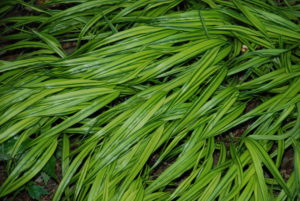
Gaura (Gaura lindheimeri), also known as wand flower, whirling butterfly, and bee blossom (Gaura lindheimeri) is one tough perennial that blooms through the summer into fall. Gaura is native to Texas and Louisana and is hardy to USDA plant zones (5)6-9. It lives many years in hot humid climates and requires very little care after the first year.
Plant heights range from 15 inches to 4 feet (see variety list below). Many cultivars are compact and that makes them container-friendly as well. Gaura foliage is lance-shaped, often tinted with pink, white, and cream (depending on variety). Wiry flower stems bear numerous 1-inch 4-petalled flowers. Color palette is white, pink, reddish, or color blends. Heaviest blooming occurs in early summer, but plants often flush full of flowers through summer / early fall and are visited by bees, butterflies, and an occasional hummingbird or two.
Flowers catch your eye as fluttering wands (stems) of white or pinkish flowers. Compact varieties of gaura are also make good pot fillers. Flowers may appear delicate but gauras are one exceptionally tough perennial. Cut taller varieties back by one-half in the early days of summer to promote compactness. Also, remove old spent cut floral stems back; new stems will rush up and plant(s) will re-bloom. Disease and pest problems along with deer rarely trouble gaura.
Plant gaura in a sunny location that captures 6 to 8 hours of direct sun daily and in average well-drained soil. Gaura develops a deep taproot and is rated as highly drought tolerant. Irrigate gaura the first year and enjoy not having to reach for a watering hose in subsequent summers. Feed plants with a slow release fertilizer in spring. Annual mulching is highly recommended for long term plantings.
Popular varieties:
‘Siskiyou Pink’ – favorite old-timey variety with deep pink flowers
‘Whiskers Deep Rose’ –ultra compact (14-16 inches tall) with rosy-pink petals and white stamens, all above burgundy-tinted foliage.
Whirling Butterflies® – bright white flowers with red sepals; compact (36 inches tall); free flowering and don’t self-seed.
Sparkle White (2014 All-American Selection (AAS) winner)- 24 inch tall compact.



















